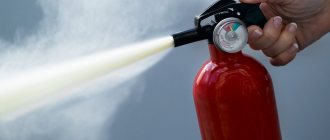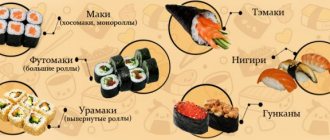The essence of product labeling
Labeling refers to a complex process in which a mark with a unique code is applied to each product. For this brand, a product item is tracked through an information system until it reaches the final buyer.
The identification tool is a mark containing a datamatrix format code. The system operator generates such codes for each product and transmits them to the manufacturer (importer). The code encrypts basic information about the production of the product - country of origin, manufacturer, basic parameters (for example, model, color, shoe size).
Mandatory product labeling from 2020 applies to all participants in product circulation. The manufacturer applies the mark to the product and registers the code in the special information system “Honest Sign”. Now it reflects information about this instance with reference to this code. There are other information systems (IS) for labeling and traceability of goods, for example, EGAIS for alcohol or FSIS "Mercury" for products subject to veterinary control.
The IP records each stage of the movement of goods subject to mandatory labeling starting from 2020, along the chain: manufacturer > distributor > wholesaler > retail store. Thus, you can always track where this product is located. When it is sold in retail, it is taken out of circulation through the online cash register and excluded from the information system. At the same time, the buyer can also obtain data about a specific product using a unique code using a special application for mobile devices. Thus, labeling helps protect the market from counterfeit products.
The functioning of the entire system through its subsidiary structure is ensured by the Center for the Development of Advanced Technologies (CDPT). This company became a participant in the system as part of a public-private partnership. Several ministries are responsible for labeling: the Ministry of Industry and Trade coordinates it, the Ministry of Finance provides legal regulation, and the Ministry of Telecom and Mass Communications monitors the work of the information system and operator.
Other documents confirming the compliance of goods (works, services) with mandatory requirements
Compliance of goods with mandatory legislative requirements for quality and safety can also be confirmed (clause 2 of article 456 of the Civil Code of the Russian Federation
;
clause 10 of the Uniform Sanitary-Epidemiological and Hygienic Requirements, approved. By decision of the Customs Union Commission dated May 28, 2010 No. 299
;
clause 1 art. 2.3 of the Law of the Russian Federation of May 14, 1993 No. 4979-1 “On Veterinary Medicine”
;
List, approved. By Order of the Ministry of Agriculture of Russia dated December 18, 2015 No. 648
;
clause 142 of the Rules, approved. Decree of the Government of the Russian Federation dated 05/06/2011 No. 354
):
• certificate of state registration, which certifies the compliance of certain goods with uniform sanitary, epidemiological and hygienic requirements in the territory of the Eurasian Economic Union;
• quality certificate;
• veterinary certificates, certificates, certificates confirming the compliance of certain products (for example, meat, fish, dairy products) with veterinary and sanitary safety requirements.
Which products are already labeled
Mass product labeling began four years ago. In 2020, it applies only to certain groups of goods, but their list is gradually expanding. What and from what time will be marked with unique codes is decided by the Government on the basis of Law No. 487-FZ of December 31, 2017. Today, Order No. 792-r dated April 28, 2018 is in force, which provides a list of goods and the start date of their labeling. And by order No. 2963-r dated December 28, 2018, its rules were approved.
For each product group, labeling is first introduced as an experiment. The timing of its implementation is set individually, taking into account the specifics of the industry. If the results are acceptable, a decision is made on mandatory labeling from 2020. First, goods that are produced or imported into the country are marked with codes. At the same time, previously released batches that do not contain identification codes are, up to a certain point, allowed to be sold on an equal basis with marked ones.
As a result, in 2020 the labeling system applies to several groups of goods:
- Clothing made of natural fur, its elements and accessories. The specified group is fully marked. This means that it is prohibited to produce, import, supply, accept and sell products from this group outside the labeling system. Any copy without a unique code in the IP is considered counterfeit.
- Tobacco products. Cigarettes and cigarettes are subject to labeling in 2020 - they have been labeled since the middle of last year. However, there are still products in suppliers' warehouses without unique codes. It can only be sold until July 1, 2020. Further, the circulation of such cigarettes is prohibited.
- Medicines. Their mandatory labeling was scheduled for early 2020, but was postponed until July 1. The market, according to experts, was not ready for it. By January 1, only a third of turnover participants were able to purchase equipment and register in the “Honest Sign” system.
- Footwear and footwear goods. This group has been labeled as an experiment for a year now. From March 1, 2020, shoes without markings are prohibited from being produced, supplied in bulk, or sold in retail outlets. Imported shoes that were purchased before March 1 can be brought into the country until April 1. It must be marked at the same time. Shoes in warehouses purchased before March 1, 2020 are allowed to be marked with unique codes until May 1, provided there is documentation of the date of purchase.
What should the products be like to meet the main indicators?
Several types of requirements for product quality are identified as priority by Russian legislation.
Safety
The legislation of the Russian Federation highlights the requirement for the safety of manufactured products as the highest priority. Product safety is a state that eliminates or minimizes possible negative impacts from its use.
According to the Federal Law “On Technical Regulation” the following requirements are mandatory:
- product safety;
- production processes;
- operation;
- storage;
- transportation;
- implementation;
- recycling.
To achieve the proper level of safety, it is necessary to apply phytosanitary and veterinary-sanitary measures.
Environmental assessment
Manufactured products should not have a negative impact on the environment during production, sales, operation and disposal. Production and storage of products should be carried out in environmentally friendly and safe conditions, minimizing harm caused to humans and nature.
Compatibility Indicators
The use of one product should not preclude the use of another similar product. When establishing the composition of compatibility requirements, a systematic approach is used, which involves taking into account the relationship in the “equipment-environment”, “product-container” systems, etc.
What else will be marked?
Information about which products are subject to labeling in the near future is presented in Table 1.
Table 1. Labeling of other products
| Category | Deadline for registration in IP | Date of prohibition of circulation without code | Deadline for marking balances |
| Cameras and flash lamps | February 29, 2020 | October 1, 2020 | December 1, 2020 |
| Tires and Tires | within 7 days from the date of commencement of circulation | November 1, 2020 | March 1, 2021 |
| Perfume and eau de toilette | March 31, 2020 | October 1, 2020 | October 30, 2021 |
| Genuine leather clothing, blouses, coats, jackets, raincoats, bed linen and textile kitchen accessories | undefined | January 1, 2021 | January 1, 2021 |
There are also products that will be subject to mandatory labeling in the future.
For now they are marked with codes in the form of an experiment, the exact timing of the stages of which has not been established. They are collected in table 2. Table 2. Experimental product labeling since 2020
| Product | Planned timing of the labeling experiment |
| Milk and products made from it | Until December 1, 2020 |
| Wheelchairs: • manual • automatic | until December 1, 2020 until May 31, 2020 |
| Bicycles | Until May 31, 2020 |
Small Business Labeling
Mandatory product labeling from 2020 has affected many business entities. In practice, preparation for the process comes down to the fact that you need to register in the marking system and purchase a scanner to read codes. Manufacturers and importers must additionally ensure that a mark is applied to each unit of goods.
When delivering marked products, the system notes which codes correspond to it. The receiving party needs to count them and compare them with those indicated by the supplier. If a shipment arrives with missing codes or without them at all, it means that the origin of the goods is questionable and cannot be accepted.
At the final point of circulation of labeled products, for example, in a retail store, the codes corresponding to the goods sold are excluded from the information system.
Tax restrictions
In connection with the introduction of mandatory labeling, changes have occurred in the rules for applying tax regimes. In accordance with Law No. 325-FZ of September 29, 2019, it is prohibited to use UTII and the patent system when selling labeled goods. Such rules are prescribed in the Tax Code. Moreover, we are talking strictly about certain goods - shoes, medicines and fur products.
Free tax consultation
As for other products whose labeling is planned for the future, this is not mentioned in the Code. It is likely that new amendments will be made by the time it is introduced.
Small businesses ask themselves: what are the reasons for such legislative restrictions? The bottom line is that the size of the UTII and the cost of the patent do not depend on the amount of income the entrepreneur receives. The imputed tax is calculated based on a physical indicator, for example, the area of the store, the number of employees or units of transport. And the price of a patent is calculated as 6% of the potential income of an individual entrepreneur, which is determined by the authorities. This approach is usually beneficial for business, but the budget suffers from it.
These tax preferences were designed to support small businesses. Many of these businesses were unable to automate the fee collection and accounting process. It would be difficult for them to calculate taxes on revenue.
However, according to the law, it is possible to sell labeled products in retail networks only through online cash registers. And with CCP, calculating income is not a problem - the technology does it itself. And now, according to legislators, there are no grounds for using UTII and a patent when selling labeled goods. Moreover, imputation will be completely abolished next year.
What should be on the label of a European Union product?
The requirements for the label (or marking) of goods manufactured in the European Union countries, according to the law, are as follows:
Required elements for food:
- trade name of the product
- list of components it contains
- quantity or category of these components \ as a percentage \
- completion date \ minimum \
- conditions of storage\or use\
- place of origin of the goods \ only if necessary \
- Name and address of the manufacturer
- Name and address of the distributor company
- If necessary, the country of origin of the goods, as well as instructions \ if necessary \
conclusions
So, we have reviewed the lists of goods subject to mandatory labeling from 2020 and later. The government plans to expand this practice in an effort to combat illegally produced or imported products. For business, on the one hand, this is an additional burden, since it is necessary to buy equipment, connect to the system and transfer data to it. On the other hand, this can help cleanse the market and push out shadow competitors from it.
Innovation is being introduced slowly. Although the list of product groups for labeling in order No. 792-is large, in fact, so far only fur clothing, medicines, shoes and cigarettes fall under it. Other products are being labeled in 2020 as an experiment.






